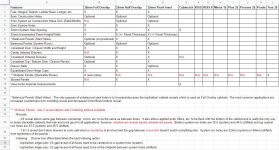New to woodworking and system 32.
I am starting with a few cabinets for the shop. Drawers will all be on sys32 holes so I can rearrange as necessary.
There is certainly a consensus on the 37mm offset for the front of the cabinet part of the slide.
Where did the extra 2mm come from? I can't find an explanation.
As for the drawer part of the slide I haven't found any explanation or consensus about locating the front. I have found illustrations of installation that show flush with the drawer front, 2mm gap like the cabinet and 5mm back from the drawer front.
Can someone point me toward an explanation?
I am building my drawers with the front of the drawer box being the front of the drawer and inset into frame-less cabinets. I am hoping that using a jig to put slide holes in the drawers I can have everything just work.
Is this a bad idea?
Why does everyone seem to use a false front for drawers?
Thanks.
I am starting with a few cabinets for the shop. Drawers will all be on sys32 holes so I can rearrange as necessary.
There is certainly a consensus on the 37mm offset for the front of the cabinet part of the slide.
Where did the extra 2mm come from? I can't find an explanation.
As for the drawer part of the slide I haven't found any explanation or consensus about locating the front. I have found illustrations of installation that show flush with the drawer front, 2mm gap like the cabinet and 5mm back from the drawer front.
Can someone point me toward an explanation?
I am building my drawers with the front of the drawer box being the front of the drawer and inset into frame-less cabinets. I am hoping that using a jig to put slide holes in the drawers I can have everything just work.
Is this a bad idea?
Why does everyone seem to use a false front for drawers?
Thanks.


